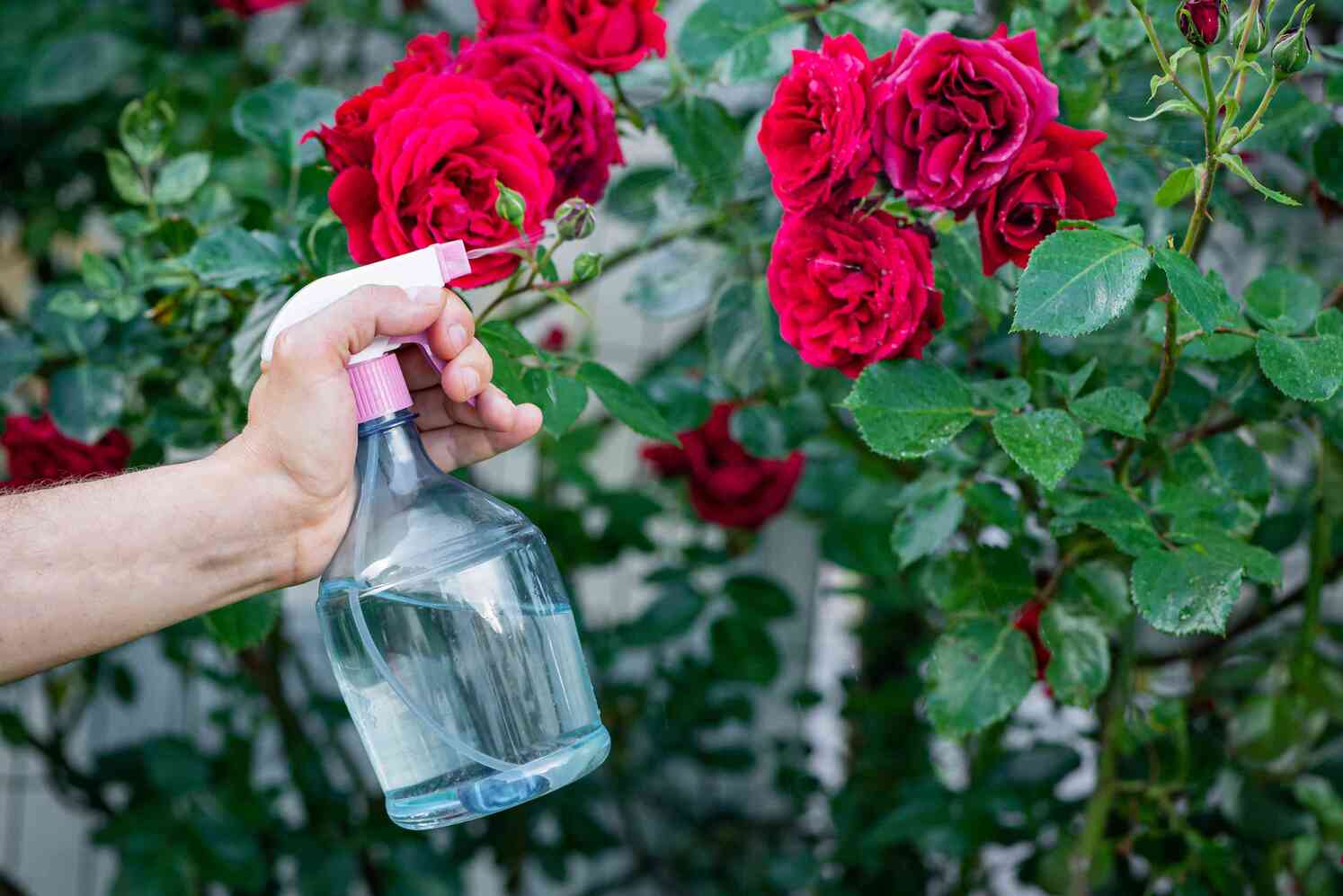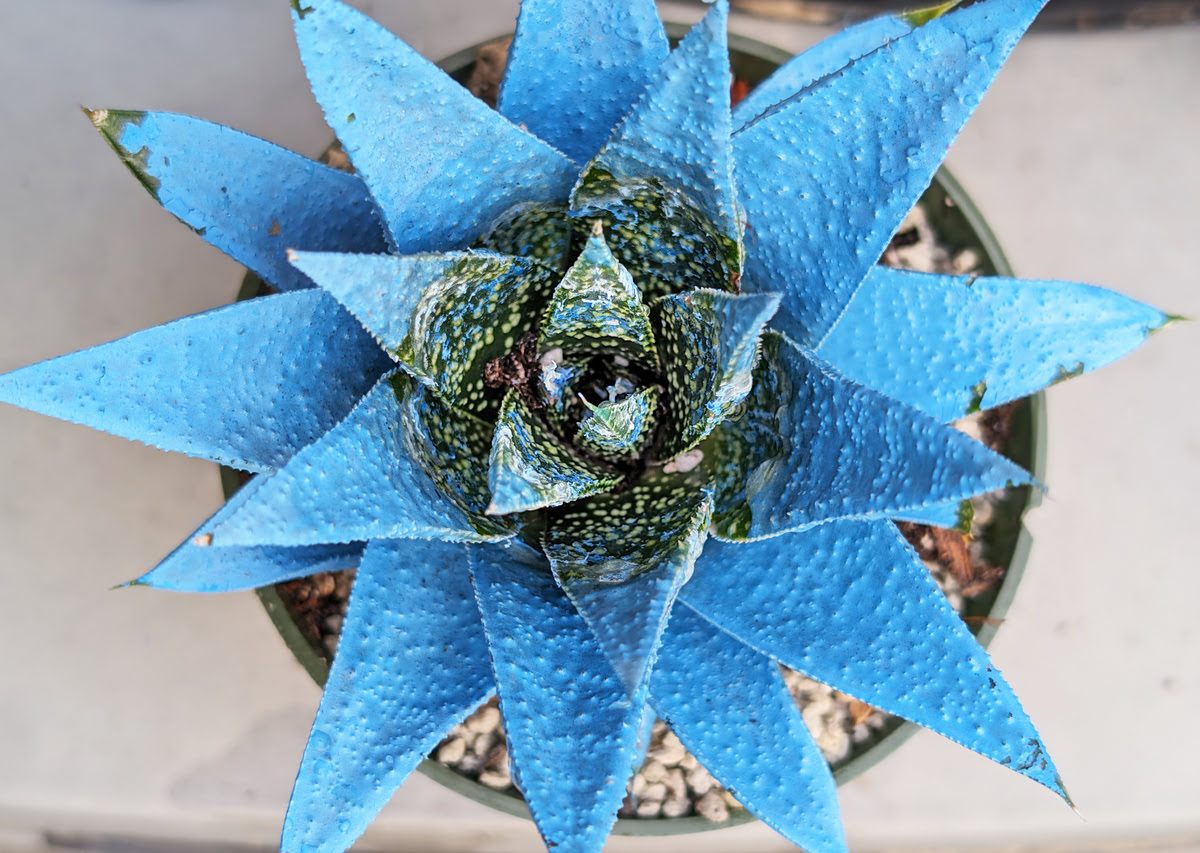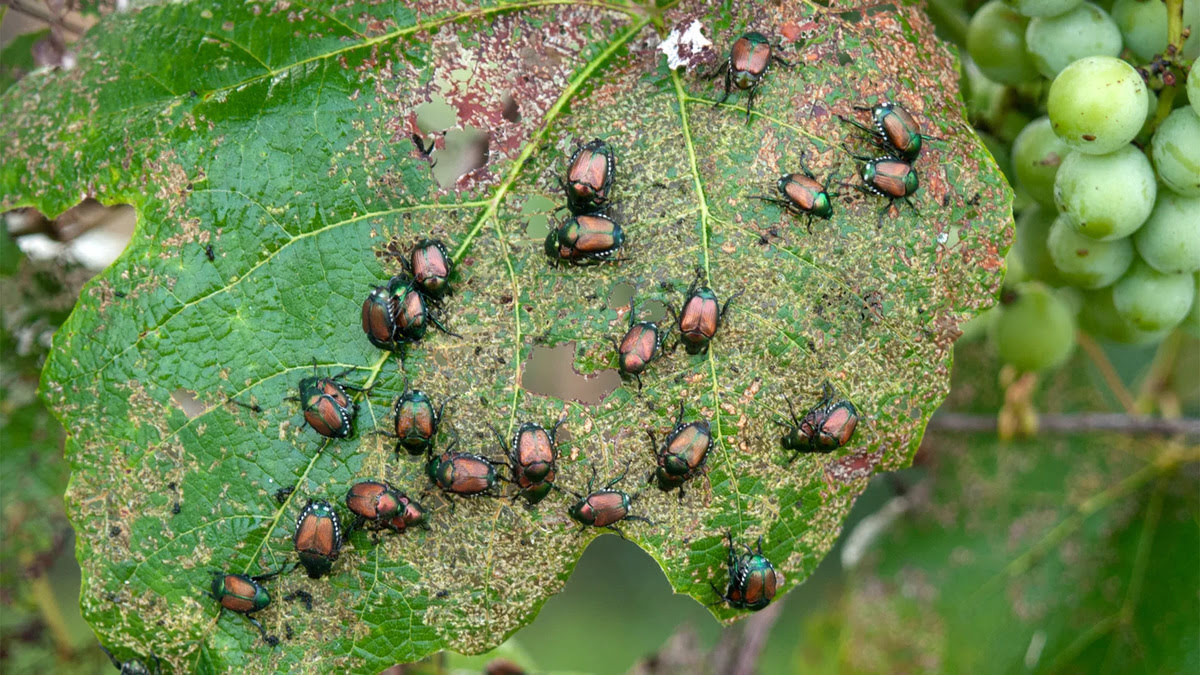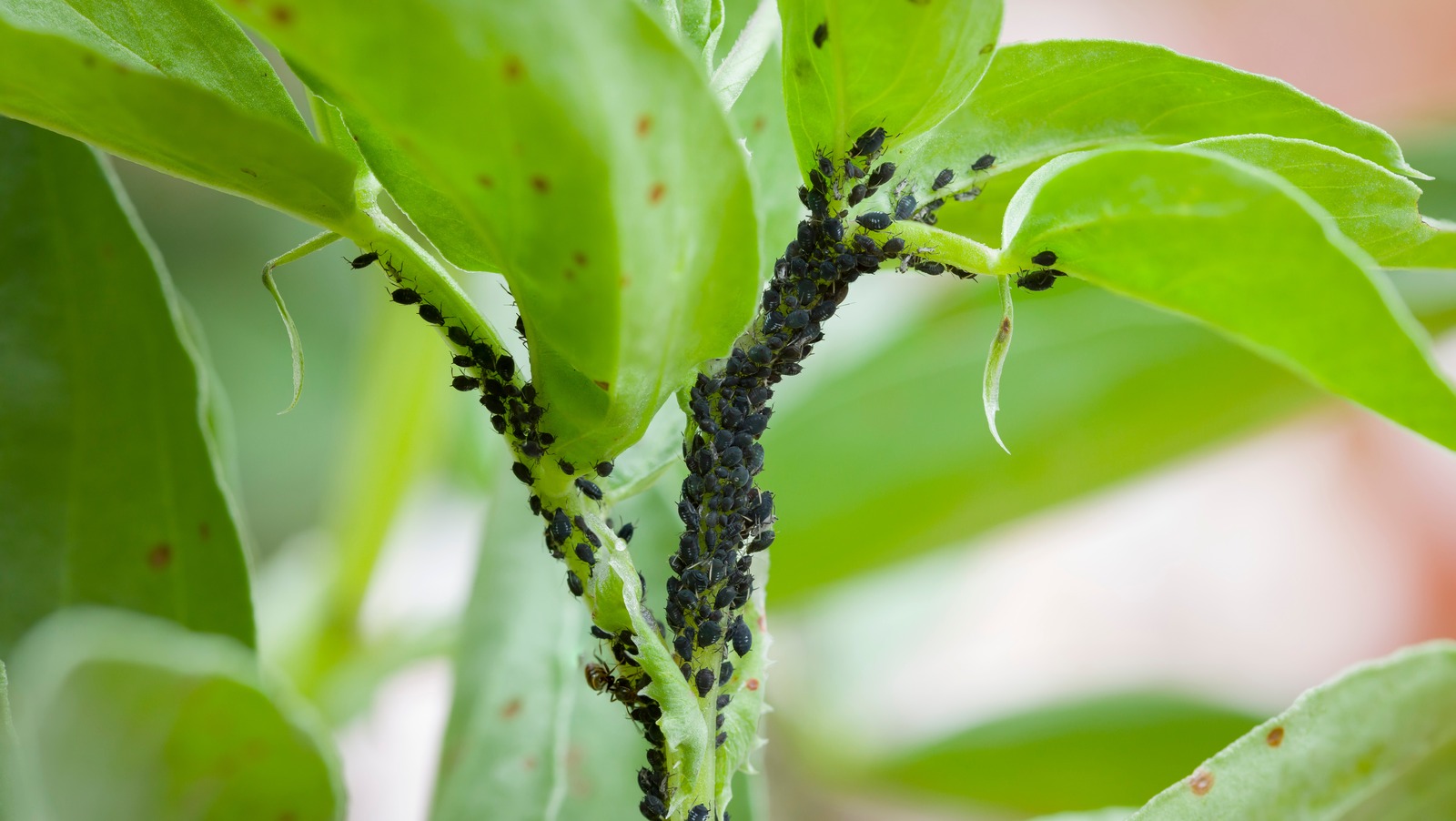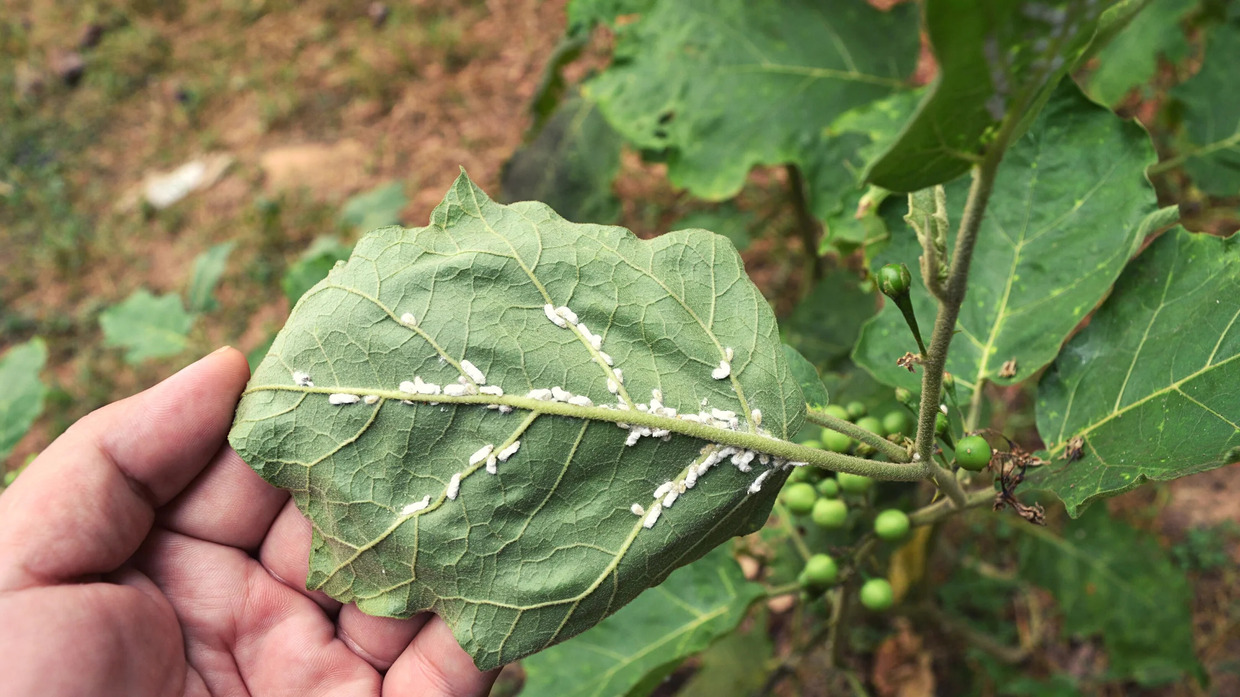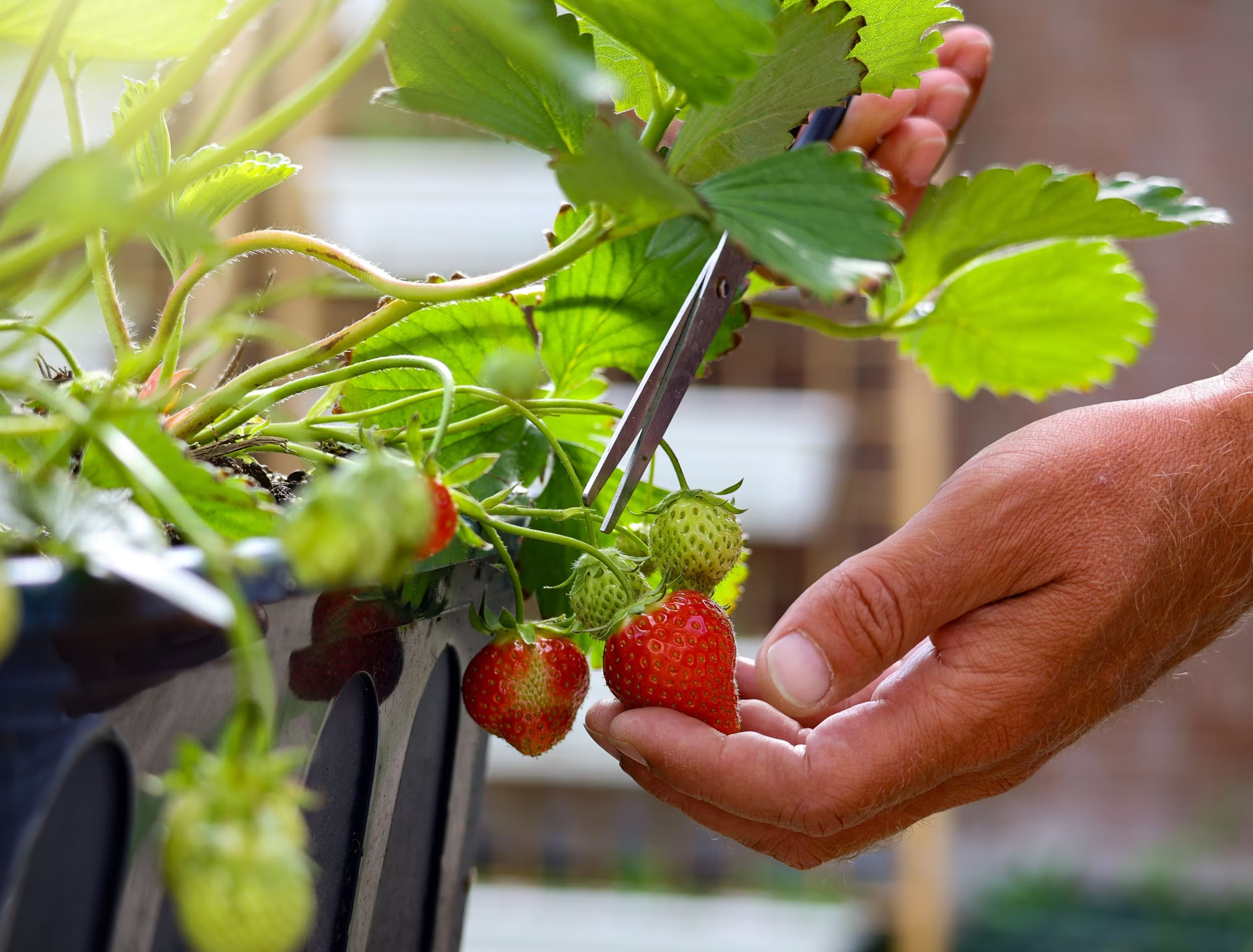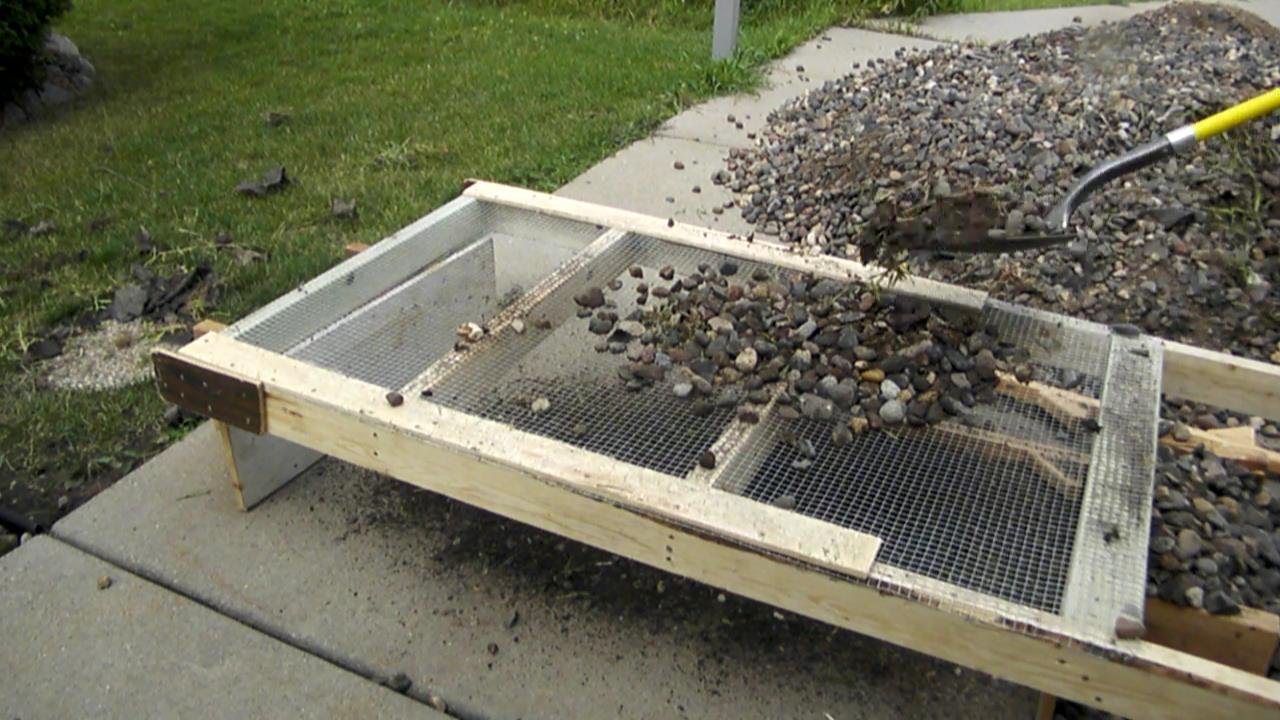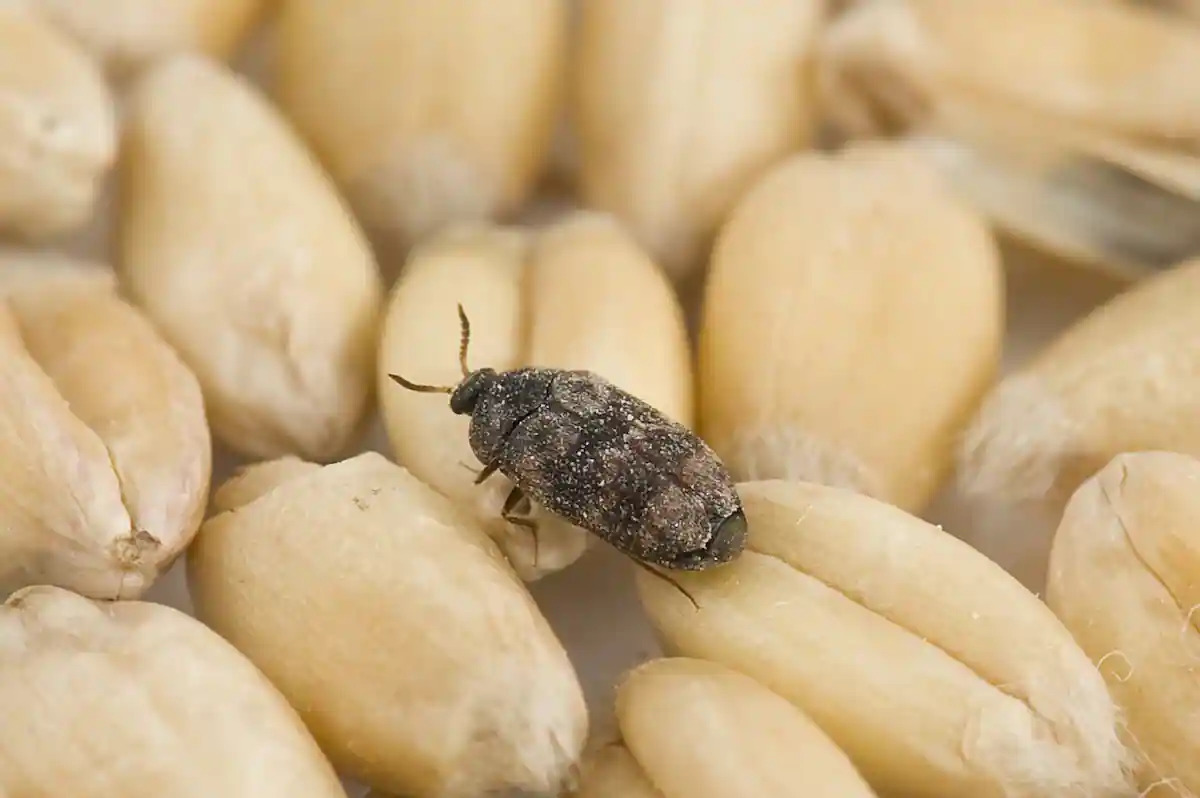Home>Gardening Tips and Tricks>Problem Solving>How To Remove Insects From Plants


Problem Solving
How To Remove Insects From Plants
Modified: January 22, 2024
Learn effective problem solving techniques to remove insects from your plants and keep them healthy. Find step-by-step solutions and prevention tips in our comprehensive guide.
(Many of the links in this article redirect to a specific reviewed product. Your purchase of these products through affiliate links helps to generate commission for Chicagolandgardening.com, at no extra cost. Learn more)
Table of Contents
Introduction
Plants are a fundamental component of our natural environment, providing us with beauty, oxygen, and sustenance. However, they are also prone to infestations by insects, which can cause significant damage and even lead to the demise of beloved plants. Whether you have a flourishing garden, a collection of indoor plants, or even a single potted plant, it’s crucial to address insect infestations promptly to ensure the health and vitality of your green companions.
Dealing with insects on plants can be overwhelming, especially if you’re unsure of the best approach. This comprehensive guide will walk you through the steps to effectively remove insects from your plants, providing both natural methods and options for using organic insecticides. Whether you prefer eco-friendly solutions or more aggressive measures, you’ll find the information you need to tackle any insect infestation and restore your plants to their former glory.
Understanding the threat that insects pose to plants is the first step in addressing the problem. Insects can be more than just a nuisance; they can weaken plants by feeding on their leaves, stems, and roots. Some insects even transmit diseases that can lead to further damage or death. By recognizing the signs of an infestation and taking timely action, you can protect your plants from further harm and foster a thriving, pest-free environment.
Throughout this guide, we’ll also explore common types of insects that affect plants and the distinctive signs they leave behind. By familiarizing yourself with these pests, you’ll be equipped to identify and target the specific insects plaguing your plants. Furthermore, we’ll discuss natural methods for removing insects, such as companion planting and homemade insect repellents, which allow you to address the problem without relying on chemical interventions.
Ultimately, by following the advice outlined in this guide, you’ll gain the knowledge and tools to banish insects from your plants and prevent future infestations. Remember, a healthy garden or collection of plants is a source of joy and pride, and by taking proactive steps to protect them, you can ensure they thrive for years to come.
Understanding the Threat of Insects to Plants
Insects pose a significant threat to the health and vitality of plants. They can cause extensive damage by feeding on leaves, stems, flowers, and even the roots of plants. Furthermore, some insects carry and transmit diseases, leading to further harm and potential plant death. Understanding the impact insects can have on plants is crucial for effectively addressing and resolving infestations.
One of the primary ways insects harm plants is through feeding. They consume plant tissues, sapping vital nutrients and energy that the plants need for growth and development. This feeding damage can weaken the plants, leading to stunted growth, discoloration, distortion, or even defoliation. Severe infestations can ultimately result in plant death, especially if the insects have attacked critical parts of the plant, such as the stem or roots.
Insects can also introduce and spread diseases to plants, further compromising their health. Some insects act as carriers of plant pathogens, depositing them onto healthy plants while feeding. These pathogens can cause various diseases, including viral, bacterial, and fungal infections. Once infected, plants may exhibit symptoms such as wilting, yellowing, necrosis, or stunted growth.
Different types of insects have distinct feeding habits and can target specific parts of plants. For example, aphids are small, soft-bodied insects that primarily feed on the sap of plants. They can quickly reproduce and form large colonies, causing significant damage to leaves, stems, and buds. On the other hand, caterpillars are voracious feeders that devour leaves, munching through foliage and leaving behind a trail of destruction.
Insects can also attract predators and pests, creating an imbalance in the ecosystem. When an insect population grows unchecked, it can lead to a decrease in beneficial insects that naturally control pest populations. This further exacerbates the problem, as there are fewer natural predators to keep the insect population under control, allowing them to multiply rapidly and cause even more damage to plants.
By understanding the threat that insects pose to plants, you can take proactive steps to detect and address infestations as early as possible. Regularly inspecting your plants for signs of insect activity and implementing preventive measures can help maintain a healthy and pest-free garden. In the following sections, we will explore common types of insects that affect plants and how to identify the signs of an infestation, empowering you to protect your plants from the damaging effects of insects.
Common Types of Insects Affecting Plants
There is a wide variety of insects that can cause damage to plants, each with its own unique feeding habits and preferences. Understanding the common types of insects that affect plants is crucial for effectively identifying and dealing with infestations. Here, we will discuss some of the most common types of insects that gardeners and plant enthusiasts often encounter.
1. Aphids: These small, pear-shaped insects are commonly found in gardens and indoor plants. They feed on the sap of plants, causing leaf curling, stunted growth, and the formation of sticky honeydew on the leaves. Aphids reproduce quickly, so prompt action is necessary to prevent infestations from getting out of control.
2. Whiteflies: Whiteflies are tiny, flying insects that also feed on plant sap. They are often found on the undersides of leaves and can cause yellowing, wilting, and the spread of diseases. Infested plants may also exhibit a sooty mold growth caused by the honeydew secreted by whiteflies.
3. Spider Mites: Spider mites are not true insects but are arachnids closely related to spiders. They are extremely small and can be red, brown, or yellow in color. Spider mites feed by piercing plant cells and sucking out the contents, leading to yellowing leaves, stippling, and fine webbing on the infected plant parts.
4. Caterpillars: Caterpillars are the larval stage of butterflies and moths. They are voracious eaters and can quickly defoliate plants. Some common caterpillars include cabbage worms, tomato hornworms, and armyworms. They often blend in with the foliage, making them tricky to spot.
5. Mealybugs: Mealybugs are soft-bodied insects covered in a powdery white waxy substance. They suck sap from plants, causing weak growth, yellowing, and deformities. Mealybugs are commonly found in greenhouses and on indoor plants.
These are just a few examples of the many insects that can wreak havoc on your plants. It’s crucial to familiarize yourself with the specific insects that are common in your region and the plant species you are cultivating. By understanding their habits and life cycles, you can implement targeted strategies to control and eliminate these pests effectively.
In the next section, we will explore the signs that indicate your plants may be suffering from an insect infestation. Learning to recognize these signs will allow you to take early action and protect your precious plants from further damage.
Signs of Insect Infestation
Detecting an insect infestation early is essential for preventing further damage to your plants. By knowing what signs to look for, you can quickly identify if your plants are under attack and take appropriate action. Here are some common indicators that suggest your plants may be experiencing an insect infestation.
1. Visible Insects: One of the most obvious signs of an infestation is the presence of insects themselves. Look closely at your plants, particularly on the undersides of leaves and along stems. You may spot clusters of aphids, whiteflies, or mealybugs, or even notice caterpillars actively feeding on the foliage.
2. Chewed or Damaged Leaves: Insects like caterpillars and grasshoppers leave behind telltale signs of their feeding. Look for leaves with irregularly shaped holes, ragged edges, or partially eaten sections. While some leaf damage can be caused by environmental factors or other pests, extensive or consistent chewing is often a sign of insect infestation.
3. Sucking Damage: Insects such as aphids, mealybugs, and spider mites feed on plant sap by piercing the plant tissues. This feeding behavior can cause distorted or stunted growth, wilted leaves, and yellowing or curling foliage. Plants may also exhibit weakened stems or show signs of premature leaf drop.
4. Honeydew and Sticky Residue: Certain insects, such as aphids and whiteflies, excrete a sticky substance called honeydew as they feed. If you notice a sticky residue on your plants’ leaves, it could indicate the presence of these pests. Honeydew can also attract ants and promote the growth of sooty mold, a black fungus that thrives on the sugary substance.
5. Webbing or Silk: Some insects, like spider mites and certain caterpillars, produce fine webs or silk threads on plants. If you observe thin webbing on the stems, leaves, or buds of your plants, it’s a sign that these pests may be present. These webs serve as protective shelters for the insects and are a clear indication of infestation.
6. Stippling or Speckling: Spider mites and thrips are known for causing stippling or speckling damage on leaves. Stippling appears as small, discolored dots or tiny light or dark spots on the leaf surface. Over time, these spots can merge, leaving the leaves with a bronzed or silvered appearance.
7. Wilting or Distorted Growth: Insects that attack plant roots, such as grubs or root maggots, can lead to wilting or stunted growth. Plants may exhibit signs of nutrient deficiency or fail to thrive despite proper care. Inspect the root zone for any signs of damage or the presence of soil-dwelling insects.
By staying vigilant and regularly inspecting your plants, you can catch insect infestations early and take prompt action. Combine visual inspections with research on common pests in your area to identify the specific insects causing damage to your plants. In the next sections, we will explore natural methods and organic insecticides to help you effectively remove insects from your plants and restore their health.
Natural Ways to Remove Insects from Plants
If you’re looking for eco-friendly solutions to remove insects from your plants, there are several natural methods you can try. These methods are safe for the environment, beneficial insects, and can effectively combat insect infestations. Here are some effective natural ways to remove insects from plants:
1. Companion Planting: Planting certain flowers, herbs, or vegetables alongside your vulnerable plants can help repel or deter insects. For example, marigolds, lavender, and basil are known to repel aphids and other pests. Planting strong-scented herbs like mint or rosemary can also discourage insects from visiting your garden.
2. Physical Removal: For larger insects, such as caterpillars or beetles, you can physically remove them from your plants. Check your plants regularly and pick off any visible pests by hand. Drop them into a bucket of soapy water to ensure they won’t return.
3. Homemade Organic Sprays: You can make organic insect repellents using household ingredients. For example, a solution of water and mild dish soap can be sprayed on plants to deter or suffocate soft-bodied insects like aphids and mites. Neem oil, derived from the neem tree, is also an effective natural insecticide that can control a broad range of pests.
4. Attract Beneficial Insects: Encourage the presence of beneficial insects in your garden that prey on harmful pests. Ladybugs, lacewings, and praying mantises are natural predators that can help control aphids, caterpillars, and other plant-damaging insects. You can attract these beneficial insects by planting specific flowers, such as daisies or yarrow, which provide food and shelter.
5. Introduce Natural Predators: Consider introducing beneficial insects directly into your garden. You can purchase ladybugs or nematodes, which are microscopic organisms that attack soil-dwelling pests like grubs or caterpillars. These natural predators can provide long-term control of insect populations without the need for chemical pesticides.
6. Crop Rotation: Insect infestations can often be prevented by practicing crop rotation. By rotating your plantings each year, you help disrupt the life cycle of pests that may have overwintered in the soil. This reduces the likelihood of recurring infestations and allows the soil to replenish nutrients naturally.
When using natural methods to remove insects, it’s essential to remain patient and consistent. Some methods may take time to yield results, as they rely on creating a balanced ecosystem where beneficial insects can establish themselves. Regular monitoring and proactive measures will help protect your plants and keep insect populations in check.
In the next section, we will discuss using organic insecticides as an alternative approach to remove insects from plants.
Using Organic Insecticides
While natural methods can be effective, sometimes the severity of an insect infestation may require stronger measures. Organic insecticides offer a viable alternative to chemical-based products, providing pest control without harmful long-term effects on the environment, beneficial insects, or human health. Here are some organic insecticides you can use to remove insects from your plants:
1. Neem Oil: Derived from the neem tree, neem oil is a popular organic insecticide. It disrupts the feeding, growth, and reproduction of many insect pests, including aphids, whiteflies, and mites. Neem oil can be sprayed directly on plants or used as a soil drench to control soil-borne pests.
2. Insecticidal Soap: Insecticidal soaps are made from natural fatty acids and work by suffocating soft-bodied insects like aphids, mealybugs, and spider mites. They are effective at controlling pests on contact and pose minimal risk to beneficial insects. Always follow the instructions on the product label for proper usage and application.
3. Pyrethrin: Pyrethrin is a botanical insecticide derived from the chrysanthemum flower. It is highly effective against a wide range of pests, including aphids, beetles, and caterpillars. Pyrethrin breaks down quickly in the environment and has a minimal impact on non-target organisms.
4. Bacillus thuringiensis (Bt): Bt is a naturally occurring soil bacterium that produces proteins toxic to specific insect larvae. Bt-based insecticides target caterpillars, such as cabbage worms and tomato hornworms, and are harmless to humans, pets, and beneficial insects. Apply Bt directly to the foliage, ensuring thorough coverage.
5. Diatomaceous Earth: Diatomaceous earth is a fine powder made from the fossilized remains of diatoms. It works by damaging the exoskeleton of insects, causing dehydration and death. Sprinkle diatomaceous earth around the base of plants or directly on the pests you are targeting. Use caution to avoid inhaling the dust and only apply in dry conditions.
It’s important to remember that while organic insecticides are generally safer than their chemical counterparts, they can still impact some non-target organisms. To minimize any potential risks, always follow the product instructions regarding application rates, timing, and precautions. Additionally, try to target the specific pest you are dealing with rather than applying insecticides indiscriminately.
Using organic insecticides as part of an integrated pest management approach can help reduce insect populations and protect your plants. However, for long-term control, it’s essential to combine these treatments with other preventive measures, such as maintaining healthy soil, implementing good sanitation practices, and promoting biodiversity in your garden.
In the next section, we will discuss methods for preventing future insect infestations, helping you maintain healthy and pest-free plants.
Preventing Future Insect Infestations
Prevention is key when it comes to dealing with insect infestations. By implementing preventive measures, you can minimize the risk of future attacks and maintain healthy, thriving plants. Here are some effective strategies for preventing future insect infestations:
1. Maintain Plant Health: Healthy plants are less susceptible to insect infestations. Provide your plants with proper care, including regular watering, appropriate fertilization, and adequate sunlight. Ensure that your plants are not stressed due to factors such as overwatering, under watering, or poor soil conditions, as stressed plants are more vulnerable to pests.
2. Practice Crop Rotation: Rotate your crops each growing season to prevent the buildup of pests and diseases in the soil. Different plant families have different susceptibility to specific insects, so changing the location of your plants helps break the pest life cycle and reduces the likelihood of reinfestation.
3. Remove Infected Plant Material: Promptly remove any plants or plant parts that show signs of infestation. Infected leaves, stems, or flowers can serve as a breeding ground for pests, allowing them to multiply and spread to other plants. Properly dispose of infected material away from your garden to prevent pests from reinfesting the area.
4. Weed Control: Weeds can serve as host plants for many pests. Regularly remove weeds from your garden to eliminate potential breeding grounds and minimize the presence of insect pests. Be meticulous in removing weeds, especially those that serve as known hosts for common garden pests.
5. Encourage Beneficial Insects: Create a welcoming environment for beneficial insects by providing them with food and shelter. Planting a variety of flowering plants, especially those with small, nectar-rich flowers, will attract beneficial insects like ladybugs, lacewings, and parasitic wasps, which prey on pests. Consider incorporating plants that provide habitat, such as ornamental grasses or shrubs, to support beneficial insects.
6. Use Floating Row Covers: Floating row covers are lightweight fabric covers that can be placed over plants to physically block pests from reaching them. They allow sunlight, air, and water to penetrate while preventing insects from laying eggs or feeding on the plants. This method is particularly useful for protecting susceptible vegetables and herbs.
7. Practice Good Garden Hygiene: Maintaining good garden hygiene can help prevent the buildup of pests and diseases. Regularly clean garden tools and equipment to avoid spreading pests. Clear away fallen leaves, debris, and plant residue, as they can harbor pests and provide overwintering sites. By maintaining a clean and tidy garden, you reduce the chances of pests finding a home.
By implementing these preventive measures, you can create a less favorable environment for insects and reduce the risk of future infestations. Remember to be proactive and monitor your plants regularly for any signs of pest activity. With a well-maintained and pest-resistant garden, you can enjoy healthy and beautiful plants for seasons to come.
Conclusion
Insects can pose a significant threat to the health and vitality of our plants, but with the right knowledge and strategies, we can effectively remove them from our beloved green companions. By understanding the potential damage caused by insects, recognizing the signs of infestation, and implementing natural or organic methods, we can protect our plants and create a thriving, pest-free environment.
Through this comprehensive guide, we have explored various techniques to remove insects from plants. We discussed the importance of understanding the threat that insects pose, the common types of insects that affect plants, and the signs of infestation to look out for. We also delved into natural methods, such as companion planting, physical removal, and homemade organic sprays, which provide safe and environmentally friendly solutions.
Furthermore, we explored the usage of organic insecticides, including neem oil, insecticidal soap, and bacillus thuringiensis (Bt), which offer effective pest control without harmful effects on the environment or beneficial insects. These alternatives to chemical pesticides allow us to protect our plants while maintaining the ecological balance of our gardens.
Lastly, we highlighted the importance of preventive measures in preventing future insect infestations. By maintaining plant health, practicing crop rotation, removing infected plant material, controlling weeds, encouraging beneficial insects, using floating row covers, and practicing good garden hygiene, we can create an environment that’s less attractive to pests and reduces the risk of future infestations.
Remember, the key to successful insect removal is early detection, timely action, and a combination of strategies that work best for your specific plants and gardening practices. By integrating these methods into your gardening routine, you can enjoy healthy, thriving plants and a pest-free environment.
So, go forth armed with the information and strategies provided in this guide, and embark on your journey to remove insects from your plants. With your newfound knowledge and dedication, you can achieve beautiful, vibrant, and pest-resistant gardens that will bring you joy for years to come.
